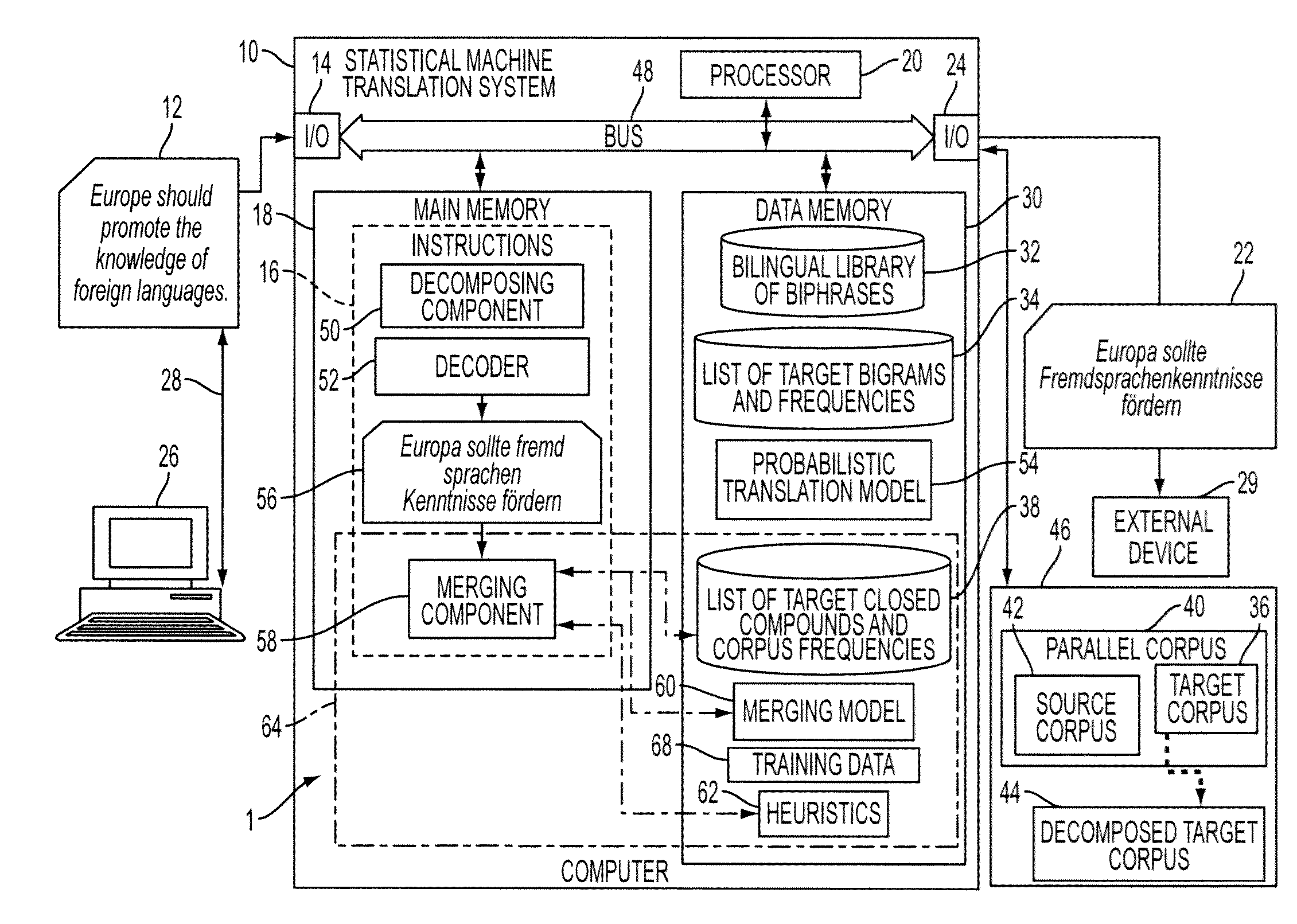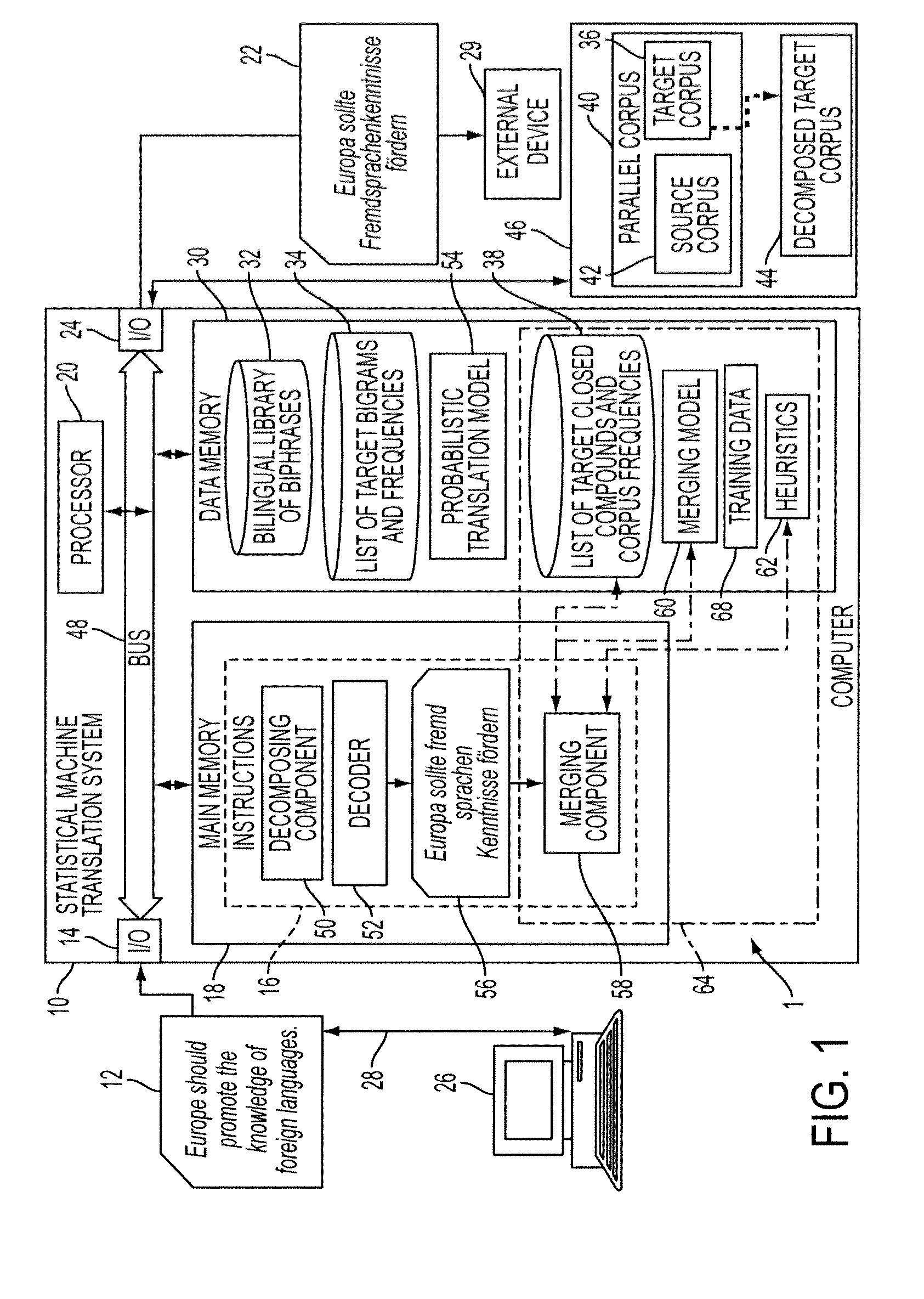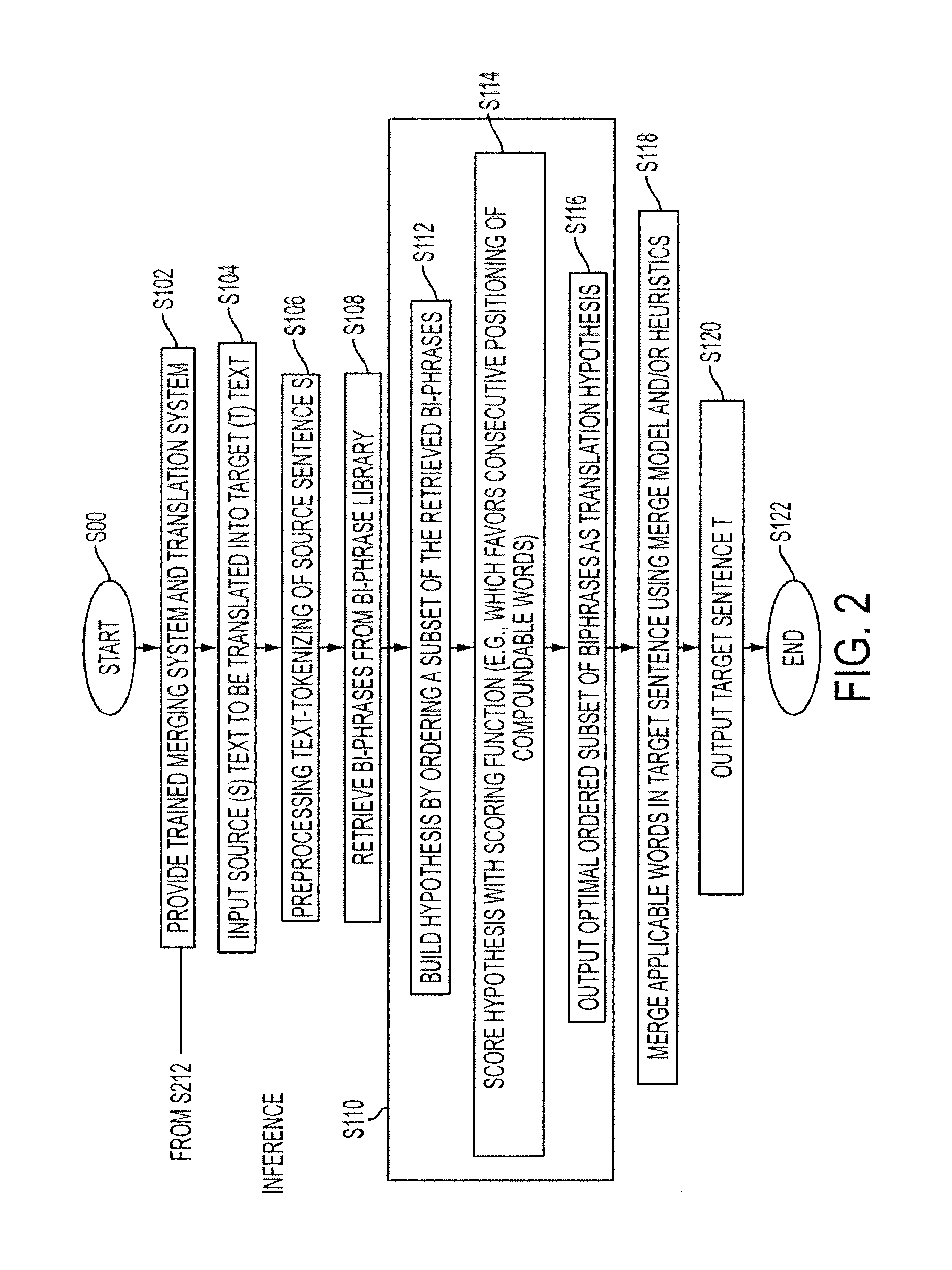System and method for productive generation of compound words in statistical machine translation
a statistical machine translation and compounding language technology, applied in the field of machine translation, can solve the problems of many applications including machine translation, step posing various problems, and translation into a compounding language is more problemati
- Summary
- Abstract
- Description
- Claims
- Application Information
AI Technical Summary
Benefits of technology
Problems solved by technology
Method used
Image
Examples
examples
[0144]Datasets
[0145]Three datasets were used for testing the method. These datasets each include a parallel corpus of documents:
[0146]1. English-Swedish Europarl documents (produced by the European parliament) (Europarl Swedish), with Swedish being the target language
[0147]2. Swedish-English Automotive documents (Automotive Swedish) with Swedish being the target language
[0148]3. Danish-English Automotive documents (A / EN-DK) with Danish being the target language
[0149]Statistics of the datasets are summarized in Table 2. For each dataset, a set of 1,000 sentences were held out for “validation”, and 1,000 sentences as a “test” set. The validation data was used both to compare the heuristics against one another and to select hyper-parameters for the machine-learning based Conditional Random Fields (CRF) approach (METHOD 2).
TABLE 2Overview of the Experimental SettingsEuroparlAutomotiveAutomotiveSwedishSwedishDanishCompounds splitN, V, AdjN, V, AdjNPOS tag-setsPOSPOS, RPOSRPOSDecoderMoses...
PUM
 Login to View More
Login to View More Abstract
Description
Claims
Application Information
 Login to View More
Login to View More - R&D
- Intellectual Property
- Life Sciences
- Materials
- Tech Scout
- Unparalleled Data Quality
- Higher Quality Content
- 60% Fewer Hallucinations
Browse by: Latest US Patents, China's latest patents, Technical Efficacy Thesaurus, Application Domain, Technology Topic, Popular Technical Reports.
© 2025 PatSnap. All rights reserved.Legal|Privacy policy|Modern Slavery Act Transparency Statement|Sitemap|About US| Contact US: help@patsnap.com



